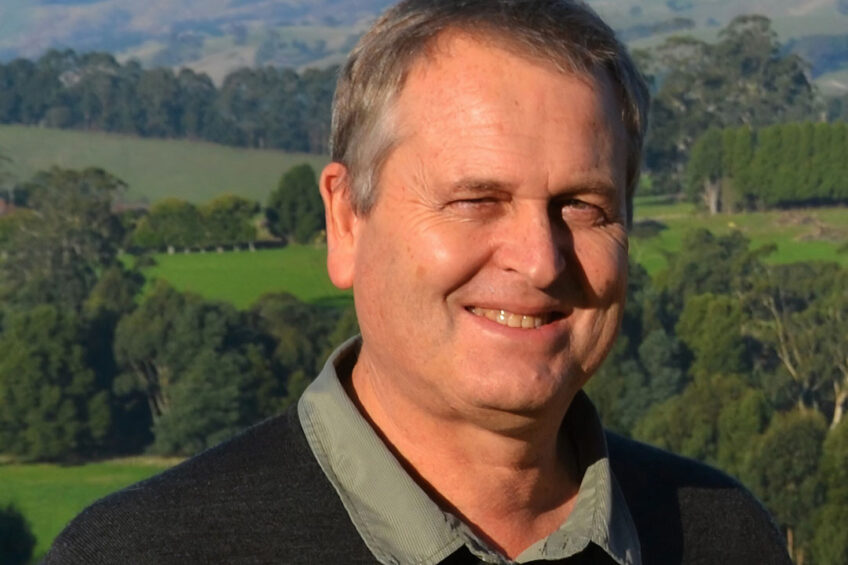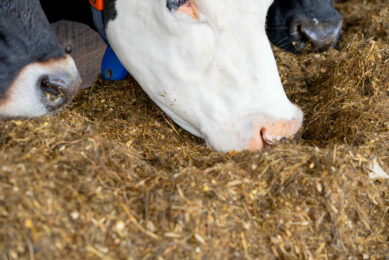Simple feed changes can save farmers hundreds per cow

Farmers can save up to AU$300 (US $210) per cow by making simple feed changes in the first 100 days of lactation.
Research manager Dr Bill Wales of Agriculture Victoria explains how his team is achieving this. “2 years into the project we’re about halfway,” he says.
According to Dr Wales the first 100 days of lactation are a critical period, where farmers can set up the success or failure of a cow or herd. “If you get it right, you’re setting yourself up for a profitable season,” he says. “Previous research has shown clearly that nutritional intervention in that early lactation period has some important benefits for the animal.”
That’s why Dairy Australia, Gardiner Dairy Foundation and Agriculture Victoria have started The First 100 Days project, part of their DairyFeedbase programme. It is focused on delivering diverse mixed grain supplements in the dairy at milking time. The project is now 2 years into the 5 year programme.

Dr Wales explains that traditionally supplementary feeding of cows has relied on cereal grains, fed in the dairy during milking time. “Wheat or a wheat and barley mix has been the go-to-supplement,” he says. “Particularly because of its low cost. And it is readily available throughout our industry. That’s why the industry has relied on it for many years.”
However, farmers can get a more profitable response using more diverse mixes of grains and protein supplements. “We certainly get more milk this way and it is also more profitable,” says Dr Wales. “The main ingredients of the mix are wheat, barley and canola meal. We are still refining the proportions. It is about two third cereal and one third canola meal.”
![]() Fertility through nutrition in dairy cows webinar
Fertility through nutrition in dairy cows webinar
In case you missed it – it is now available to watch it on demand…
Significant gain
The project research team runs a large grazing experiment each year, which tests different combinations of the supplement, explains Dr Wales. “And different management approaches. To identify the most profitable strategy. We then run subsequent experiments refining that strategy, so that we can be confident that the results can be translated into different environments.”
The project aims to achieve net gains of 300 AUS dollars (US $210) per lactation per cow. “That includes the first 100 days of lactation, but also remarkable carryover benefits that we have discovered”, says Dr Wales. “If you multiply this over a 300 cow herd, you have a gain of AUS $90.000 (US $63.000). That is significant.”
Dr Wales and his team have already identified gains in milk production of AU$0.73 (US$0.51) per cow per day in the first 100 days of lactation. “This AU$0.73 represent a third of the journey,” Dr Wales points out.
The research team has recently been able to quantify the economic benefits in the carryover period, after the cows return to the main herd and are fed a common diet. “I think we’re about halfway altogether,” Dr Wales says. “We have a total benefit of about AUS $150 (US $105) additional profit per cow. This is comparing our best strategy with a cereal grain – straight wheat – the same amount over the same period.”
 Canola meal in dairy rations
Canola meal in dairy rations
New research explains why use of this high-protein ingredient has increased in many countries.
Common diet
Dr Wales explains that all cows are put on a common diet. “We enrol them into the experiment from the commercial herd. And at the end of the 100 days we hand them back to the farm. They then go back to grazing and feeding in the dairy as they would in a normal season. The carryover effect, a higher milk production post peak, is reached without feeding the cows our mix.”
Another component of the research is to identify cows that are at risk of developing metabolic issues, prior to the cows getting sick. “That gives the manager of the herd the option of intervening,” says Dr Wales. “That is a lot easier. We can feed them differently or look after them a bit better. This is also part of getting the cows to peak higher.”
The cost of the supplement are higher than what farmers usually spend on cereal feeding. “You replace a part of the wheat, that is AUS $300 (US $210) per tonne, with canola meal of AUS $500 (US $350) dollars per tonne,” Dr Wales says. “But our profits are the net effect of the experiments.”
Dr Wales emphasises that the research team aims to make it easy for farmers to adopt these new feeding strategies. “We are trying to get feed companies to formulate grain mixes that are delivered to the farmer ready for use. This should be quite seamless.”
Feeding individual cows
To achieve the remainder of the AUS $300 (US $210) target per cow per lactation, the research team has to focus on feeding individual cows. The animals will be fed unique rations, that are based on the estimated pasture intake of each cow and the nutrients that are consumed. “We want to deliver just enough supplement. Not more than a cow requires. This is quite unique and has not been attempted before,” says Dr Wales.
Dr Wales explains that the team is looking to develop automated systems. “But it still relies on having flexibility in the grain feeding systems in the dairy. Farmers potentially need multiple feed heads to drop maybe 2 or 3 diets in front of the cows. Not everyone has got that. That’s part of our challenge.”
Another part of the project is trying to get cows to produce milk as early as possible, by focusing on the intake of combinations of different starches, forages and fat in the first 3 weeks of the lactation.
Dr Wales is confident the research team will reach its target of $AUS 300 (US $210) per lactation. “When we look at what we have done in 2 years, reaching half our target, I’m pretty sure we will get there. Even though the low hanging fruit has disappeared. It will represent taking the average dairy farmer, that is producing 6,000 litre per cow per year, to somewhere profitably closer to 10,000 litre.”
The First 100 Days project is one of 5 projects for DairyFeedbase run at Agriculture Victoria’s Ellinbank research farm. The results are communicated to farmers each year in early summer, in cooperation with Dairy Australia.
Join 13,000+ subscribers
Subscribe to our newsletter to stay updated about all the need-to-know content in the dairy sector, two times a week.










